What kind of person travels thousands of miles to a remote pacific community in the hope of being hailed as the saviour of that community? What kind of person dresses up in full dress uniform with medals and epaulettes and proclaims themselves the king of an island? And why are these people not merely tolerated, but often welcomed by the members of those communities?
Those are the questions asked by Jon Tonks in his latest book, The Men Who Would be King. It’s a book where travel, anthropological, and colonialism come up against ideas of the white saviour, the island paradise, and basic questions of the pragmatic choices we make in choosing what we believe. Jon Tonks tells us this story from the living room of his home in Larkhall, Bath.
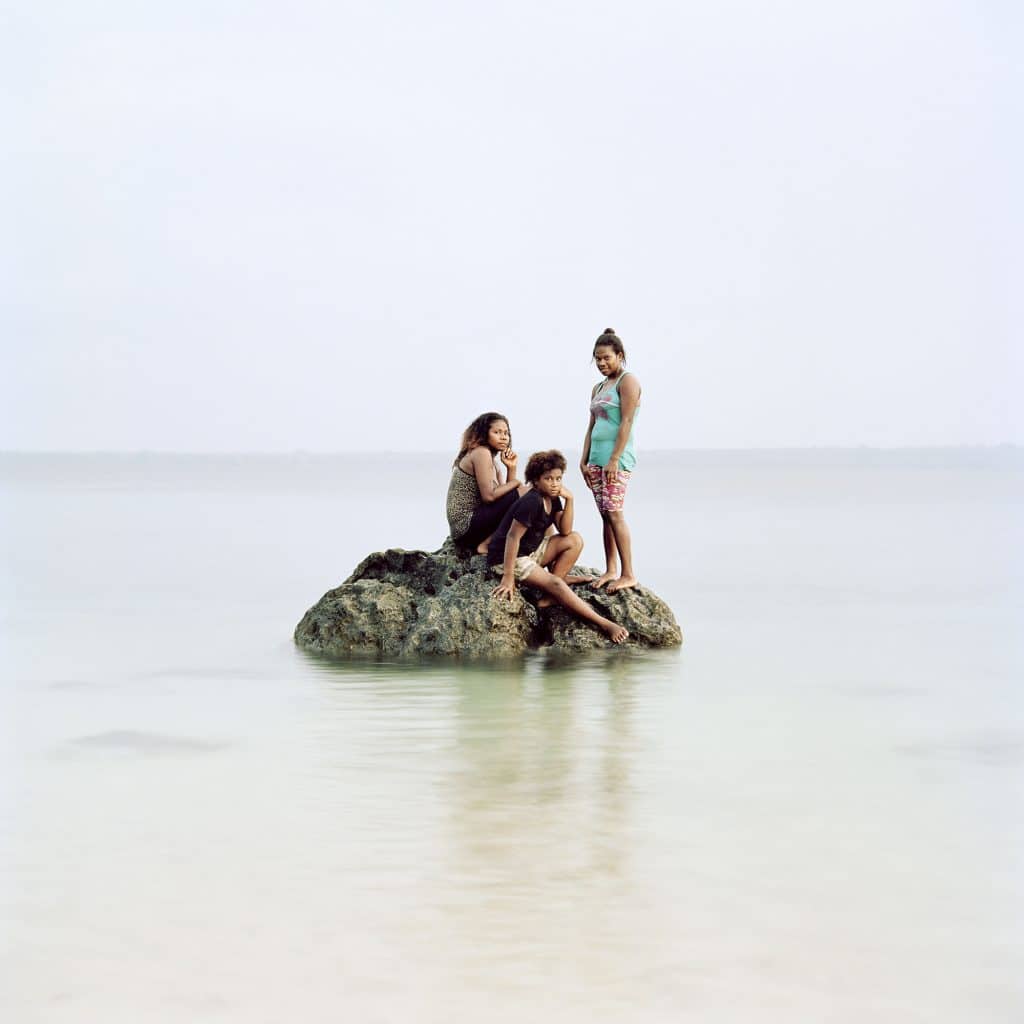
“The project started, not long after I published Empire in 2014. I had been having a conversation with a writer friend called Chris Lord about the South Pacific, and the phenomenon of cargo cults.”
It’s a phenomenon that found its most potent expression in the islands of Vanuatu. Here, cargo cults combined with anti-colonial sentiments (the group of islands was colonised by the British and the French) and the influx of US troops that brought a cornucopia of goods to the islands during the Second World War. Today, the modern cargo cult is epitomized by the southern island of Tanna, both by the village that famously celebrated Prince Philip as a king and by the John Frum ritual. John Frum is a semi-mythical American figure who is said to have lived on Tanna in the 1930s and who will one day return to Vanuatu to bring plenty to the islands and return the people to the ways of kastom – or traditional culture.
“Every February, there’s a ceremony called John Frum day on Tanna,” says Tonks. “People dress up in military fatigues, they have bamboo sticks for rifles and the chief of the village looks down upon this ceremony of people dancing and recreating the military presence in Vanuatu in the 40s. So we went out to see this ceremony, and we just didn’t know what to expect.”
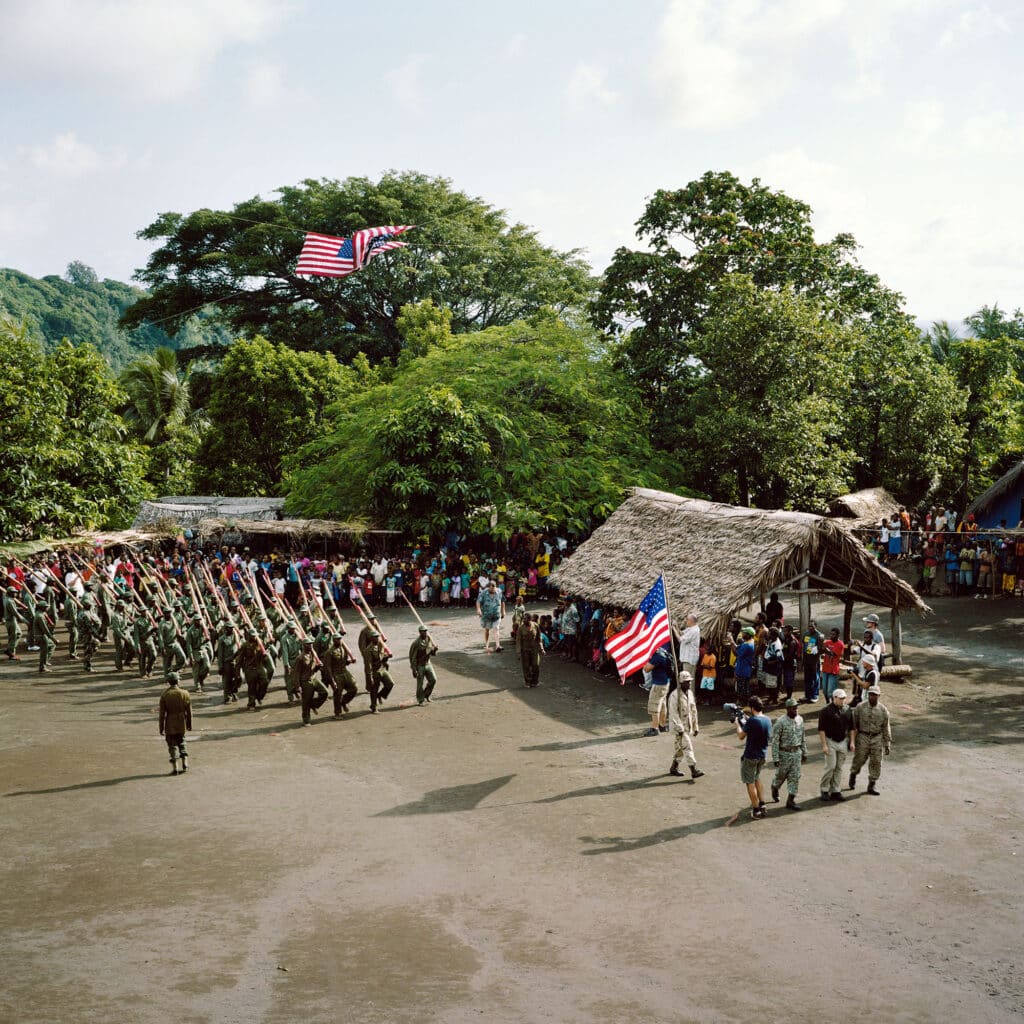
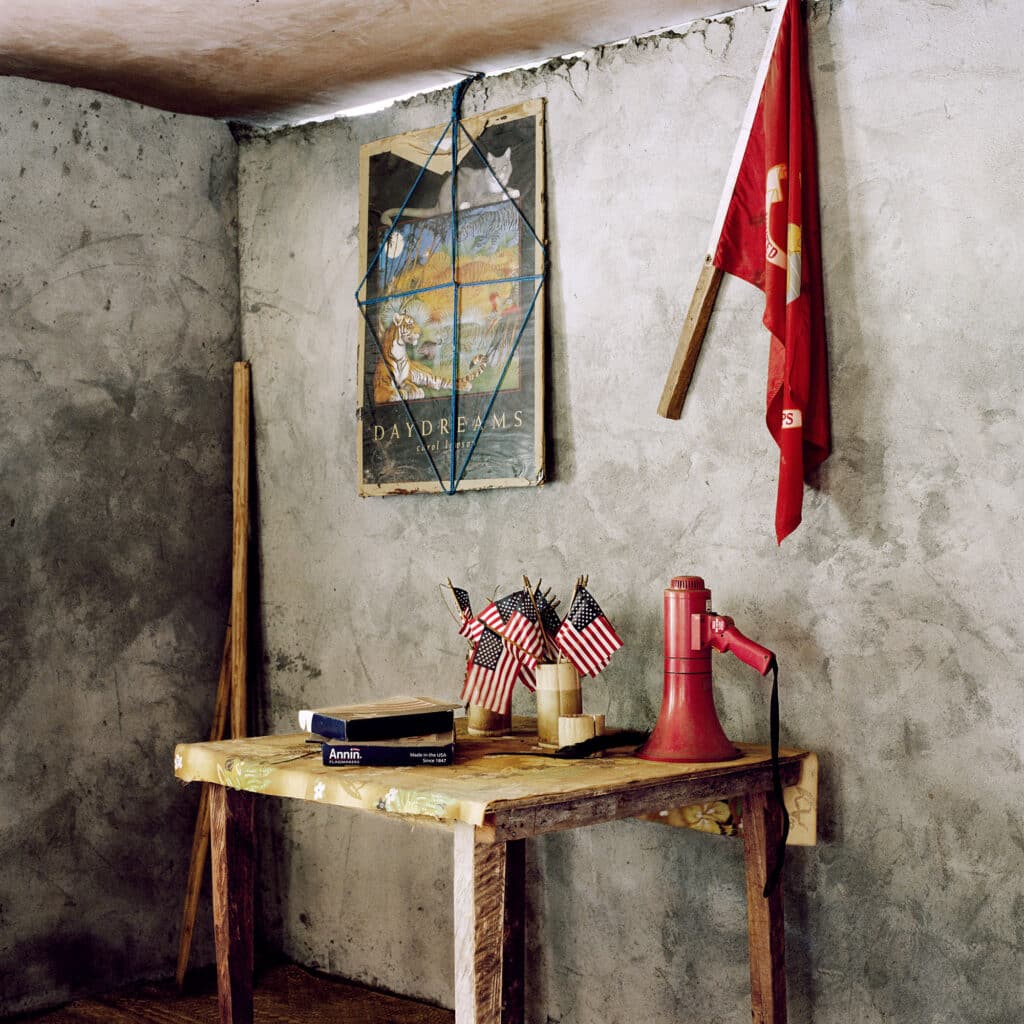
Just before the ceremony started, we started to get whispers that somebody from the White House was going to be there. So we were thinking: ‘Oh, okay, interesting. Who, from the White House has come down to see this ceremony take place?’
It turns out it wasn’t somebody from the White House, it was Cevin, a filmmaker from Boston. He turned up with the documentary crew filming him, recreating the John Frum prophecy. Over the years he had brought all sorts of goods to the island; some of it was useful like medicine or solar panels, but then there were military uniforms for the villagers and things they didn’t need like salad spinners. He also came with necklaces to hand out to people with his face on saying, ‘John Frum He will come.’
There was this big speech about how he was a friend from America, and he was going to help push away the European colonial governments and build on the American relationship.”
“All of this links to the John Frum prophecy”, says Tonks, the idea that a “white outsider will come and liberate the islands from the colonial government and from the missionaries that were forcing Christianity into everybody, so the people of Vanuatu could return to their traditional custom ways.”
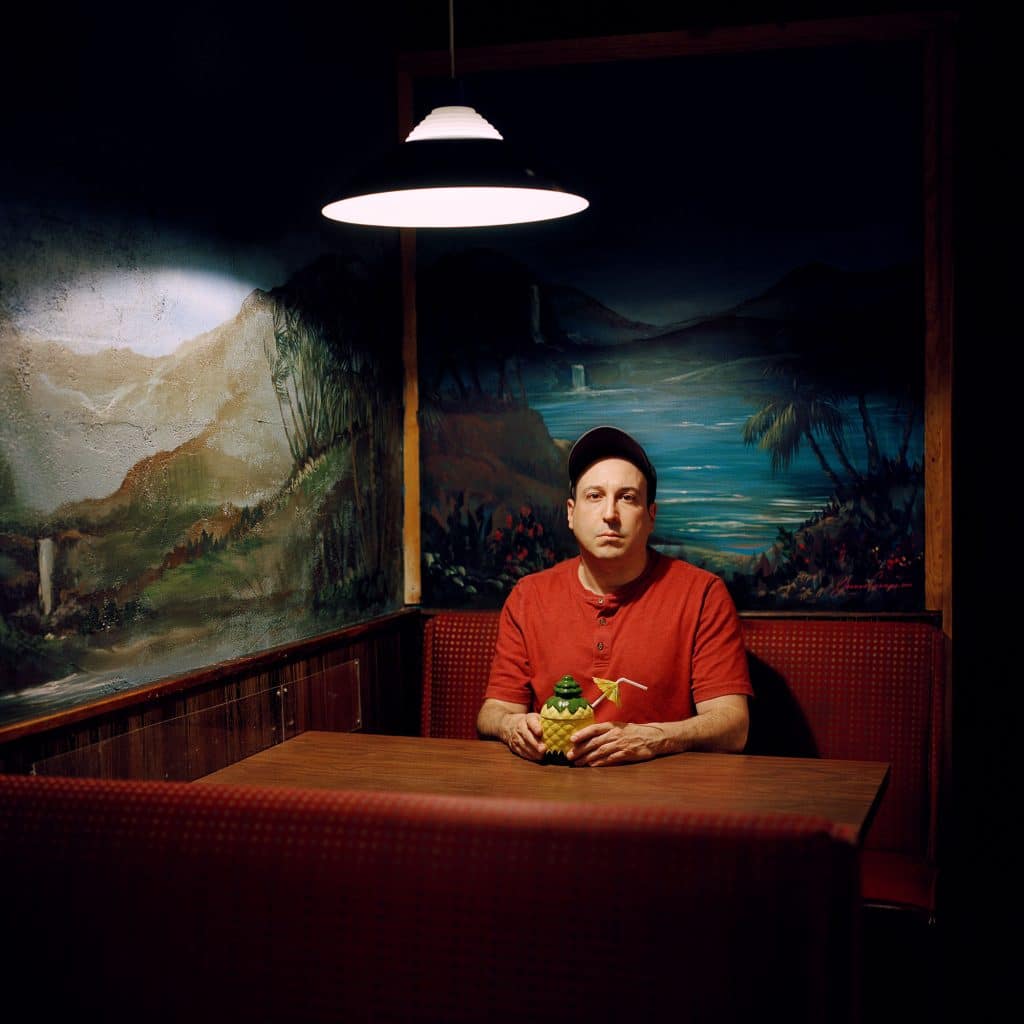
So there are images in the books showing Cevin on a raised Dais with Isaac the village chief, there are images of the remnants of the US presence, of missionary culture and of the harsh volcanic nature of the island. Tonks and Lord left the island wondering what exactly the story was and how they could tell it in a way that wasn’t based on the exoticisation of a Pacific culture.
It was a difficult call. Back in Europe, things got more complicated when they discovered another claimant to a royal title in Vanuatu.
“Chris found him,” says Tonks (who works with a writer so that additional research and text layers can develop). “He was called Claude-Philippe and he claimed to be the king of Tanna. We looked into it, and he was having this fundraising event in Berlin to raise money for the victims of the cyclone that hit in 2015. We were told we could go along and photograph this guy that considers himself king of Tanna. It was just the most peculiar day having these very formal gatherings in this pokey room in a business hotel in Berlin. We came out wondering how this guy came to consider himself to be the King of Tanna.”
Claude-Philippe claimed that he had been chosen as the successor to the throne of Tanna by Antoine Fanelli, a man who had bought land in Vanuatu in the 1970s and started a liberation movement which was another variation on the John Frum theme.
“Claude said he met Antoine Fanelli at a party in Paris in the 1990s when Antoine was very sick and said, “Claude, I’m dying. I want to pass on my crown to you” and so that’s how Claude said that he became king of Tanna. But the more we dug, the more we started to be a bit sceptical about it. We actually got in touch with Anton Fanelli’s son and he said, “No, Claude’s a complete fraudster – we don’t believe that they had ever met.”
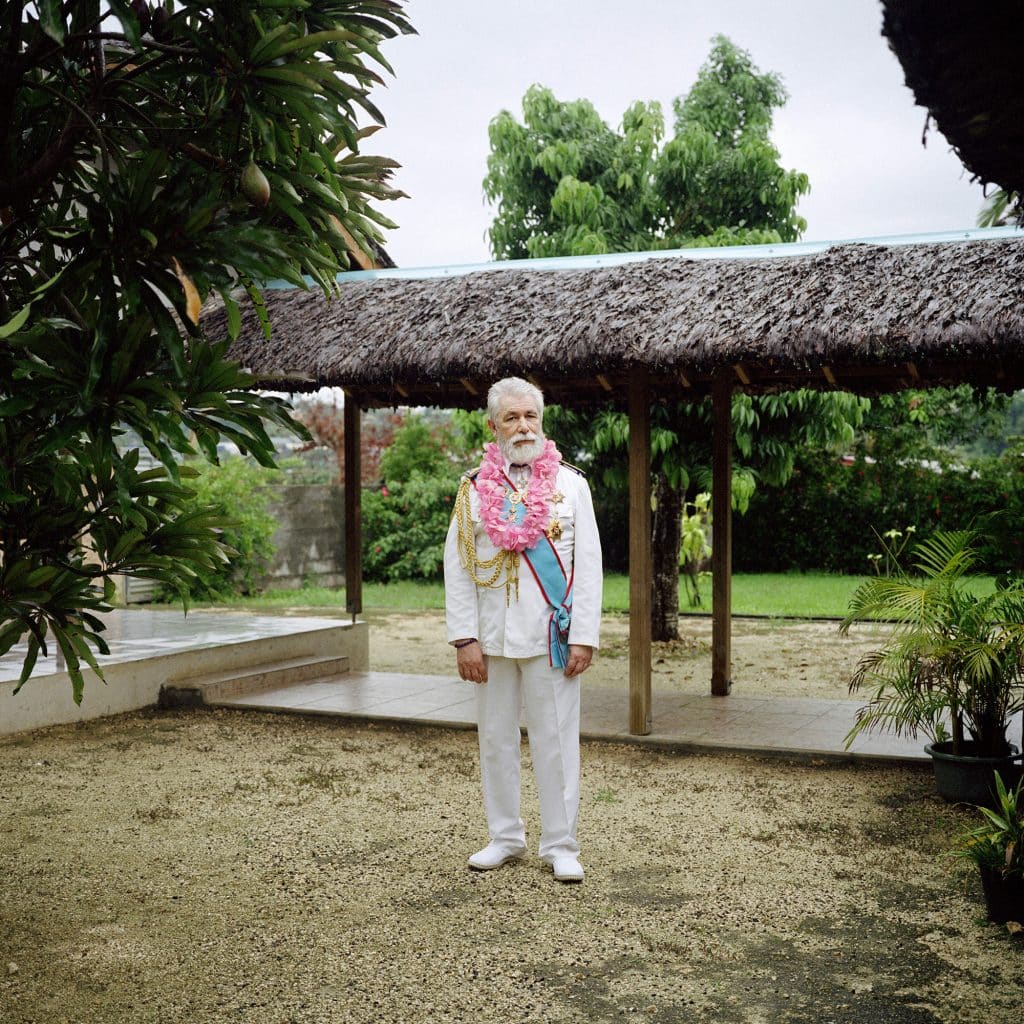
From that point on things began to get fanciful and it was apparent that the real story for Tonks and Lord were these people lining up to be candidates for the John Frum role. Both Claude and Cevin wanted their story, such as it was, to be told and were happy to be photographed in various states of attire – Claude in the white dress uniform he wears for his role as king of Tanna, and Cevin in the fire-resistant suit he had worn to approach the island’s fiery volcano.
“I think as soon as we had met Cevin, we realised that that was the interesting thing,” says Tonks. “And we knew that if we spent a long amount of time there we would see all sorts of people doing the same thing. So every time we went, there would be somebody that we met. The last time we went we came across this billionaire called Steve Quinto who had owned a budget airline. He’d moved out to Vanuatu to set up this haven claiming he was the salvation of humanity. He was this eighty-year-old guy who didn’t wear any clothes. He was setting up this sort of salvation of humanity there because he believed the world had, quote, ‘fucked itself’.
We went to the Yakel village that is connected to Prince Philip (the village considered Prince Philip to be a sort of manifestation of the John Frum prophecy). The first time we went there was an Australian filmmaker living with them. When we were there, the filmmaker had just asked two villages to recreate a war that they’d had. And I think through miscommunication, it almost kicked it off again. They had just had to buy them a pig to say sorry. And so he looked a bit stressed. And I remember we were chatting to his wife for a few minutes afterward, and, and she said, ‘Oh, yeah, love it here. Love it. It’s been great. It’s been brilliant.’ And we said, ‘don’t you ever just miss a really cold glass of wine?’. And she whimpered out ‘yes’.”
“The second time I went back there, I met JJ,” says Tonks. JJ had been to the UK and met Prince Philip as part of a BBC series called Meet the Natives – a series where villagers went to the UK to comment on British customs. “JJ had spent time in Manchester, and spoke perfect English. He steps out of his home in a penis sheath garment and not a lot else, walks over to us and we have a really good conversation with him. Then he asked if we had met Frank. He took us off into the village. We went right into this hut. And there’s this little pale guy from Norway, with a big beard and curly hair wearing the same as JJ. Frank said he wanted a simpler life from Norway. He said he wanted to escape and go somewhere different. He said he wanted to live there forever. He’s burned his passports, all his documentation and as far as he was concerned, he was there forever. JJ said, ‘We consider Frank a brother, and we consider him to be fulfilling the prophecy’.”
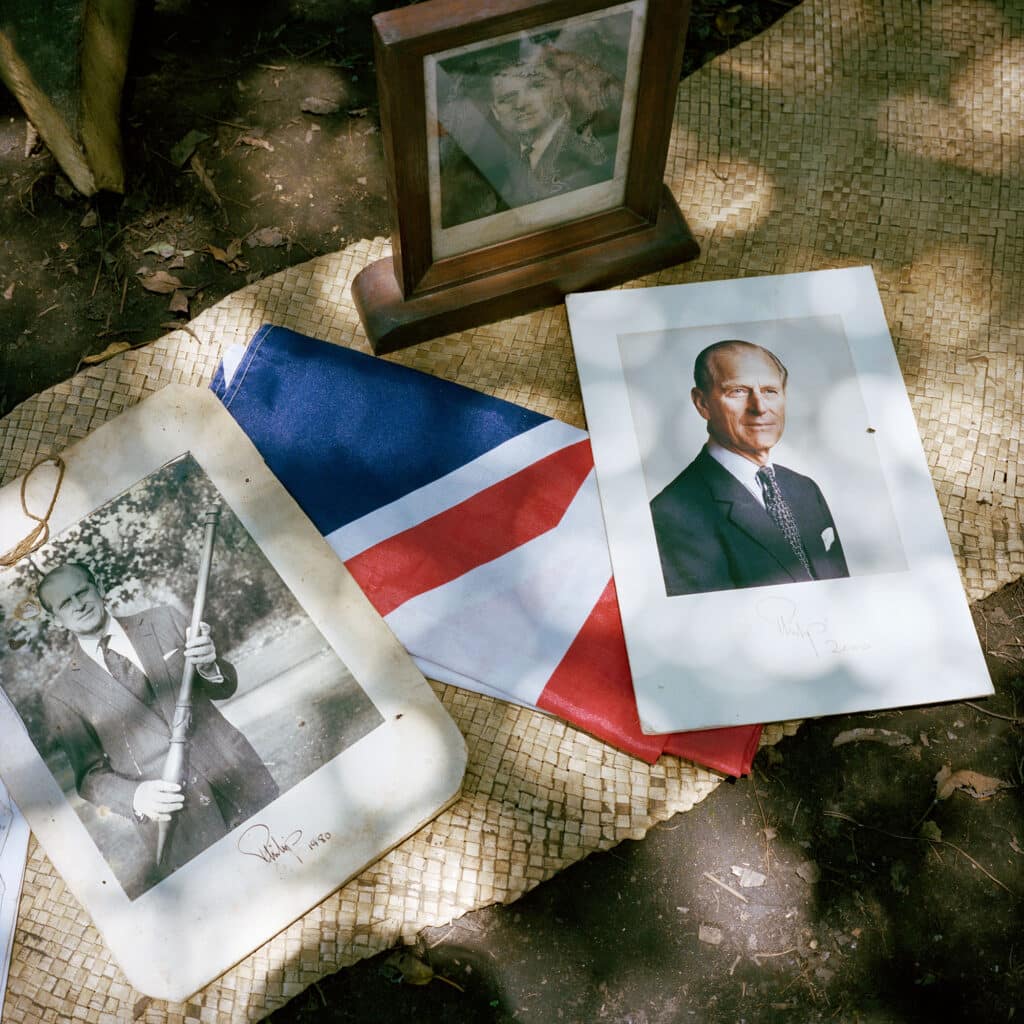
“He was saying this on camera. I was left wondering if this was a genuine belief, or if he was just saying this because he knows there’s a camera there? But the more I spoke to him about it, he seemed quite convinced that Frank would be there forever. As it happened, Frank didn’t last more than a few months. I think Frank became fed up about a lack of tidiness or it might have been the other way around. And the guys in the village were wondering what on earth they were going to do with this guy? I think they said to him, ‘We’re going shopping in town today. Will you come?’ And they just dropped him off at the police station and it was ‘See you later.’ The last I’d heard of him was from an Australian missionary who said he’d seen him walking around Port Vila looking a little bit lost.”
In The Men Who Would Be King, Tonks and Lord tell the story of Frank, Claude, Cevin, and their attempts to find an alternative reality on the islands of Vanuatu. It’s a story that questions what belief is, how it connects to history, ritual, and ways of living. And there are no easy answers. What people believe in, whether in the John Frum festival or elsewhere, is difficult to unpack.
Through the text, both Tonks and Lord become embedded in the John Frum prophecy through their search. They are part of the shape shifting experience of choosing who your saviours are and who they might be. The images in the book take you in a different direction, however. Here, Vanuatu and the people of Tanna become enmeshed in each other. The infrastructure reflects both the isolation of the communities that live there, but also the ways they are embedded in the wider world. Images of churches, missionaries, tourism, Chinese restaurants, and overseas investment point to the more concrete John Frums that exist in all our worlds.
The Men Who Would be King, Jon Tonks, Dewi Lewis editions, 200 pages, 72 colour plates & numerous illustrations, £39.00 / $55.00.



